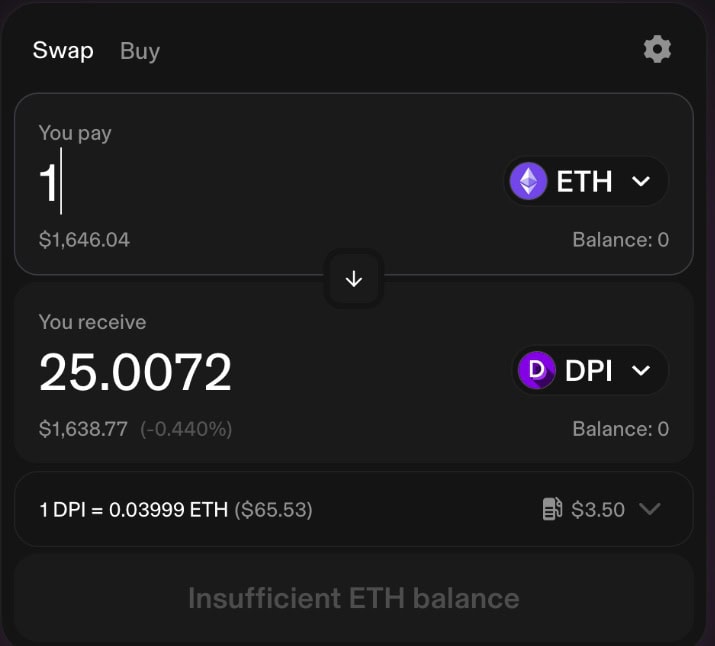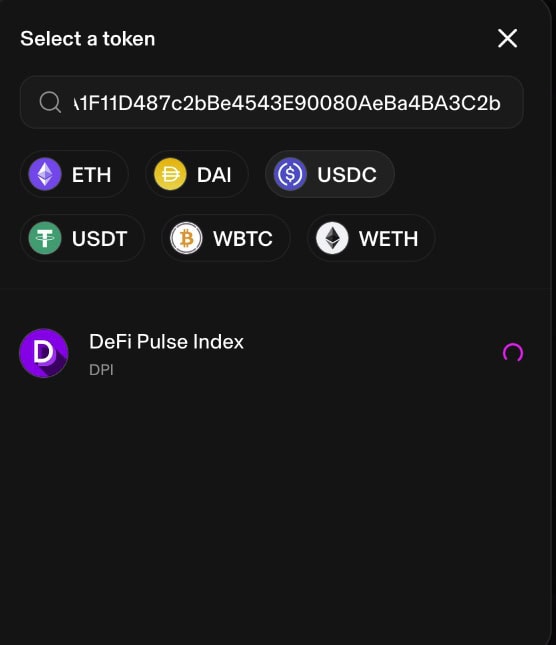What Is A Crypto Index, And How Do You Invest In One?
Introduction To Index Funds
Index funds are extremely popular among investors in the stock market, and now they are gaining traction in the world of crypto. That’s because they offer a low barrier of entry to diversified investing and have a proven track record of performance.
Index funds are a type of investment that tracks the performance of a sector or certain basket of goods. For example, the S&P 500 index tracks the performance of 500 of the largest companies being traded on the U.S. stock market. But indices can track anything.
As a result, indices offer investors a simple way to diversify their portfolio. They allow investors to get exposure to an industry or asset class, without having any prior knowledge. And they are managed by companies, so they don;t require any maintenance or upkeep either.
In return for management, these funds take a small percentage of your invested assets as a fee. However, this is still a very attractive trade off for investors with limited knowledge or time to manage their own portfolios.
Important Terminology To Know
Before we dive in, let’s make sure we have the basics covered:
- Active Investing: This is how the assets in an index or fund are being managed. Active management consists of a fund manager constantly trading and changing the portfolio to attempt to outperform the overall market. This is a more aggressive approach and carries higher fees as a result.
- Passive Investing: Passive investing is a simpler approach where the portfolio is mostly left unchanged, except for general rebalancing. These contain lower fees and aim to match the performance of whatever the index is tracking.
- Benchmark: A benchmark is a reference point that is used to measure the performance of an index or portfolio.
- Management Fee: These are the fees that you pay for investing in an index, and are used to compensate the company and individuals managing the index. Fees are automatically deducted from your portfolio and make up a small percentage of the assets you have invested.
- AUM: AUM refers to the amount of “assets under management” in an index. Basically, this number represents the total amount of money invested in an index and can help you determine how popular an index is.
- Market-cap weighted: In a market-weighted index, a portfolio is allocated based on the size of the underlying companies. For example, since Bitcoin is the largest cryptocurrency, this would be the biggest holding in an index that tracks the cryptocurrency sector.
What We Did: Added Exposure To Two Different Indices
We added exposure to two different indices in our public wallet. For educational purposes, we selected two indices that have much different allocations and goals:
1/ Investing In Alongside’s Crypto Market Index
Alongside wants to help people take advantage of crypto indices in the same way they do in traditional markets. They were the first to launch an on-chain index to cover the overall crypto space, and have plans to launch a wide range of other crypto indices.
Alongside’s Crypto Market Index:
- Number of assets in the index: 25
- Goal: Track the overall crypto market
- Largest holdings: BTC, ETH
- Management fee: 0.95%
- AUM: ~$2.6M
We invested in Alongside’s AMKT index because it is the most diversified offering we have seen in the crypto space. Each of the 25 assets was carefully selected, with the goal of providing exposure to each category of crypto assets.
This index has it all, from layer-1 blockchains like ETH and SOL to meme coins like Shiba Inu and Dogecoin. And importantly, this index is market cap-weighted.
As a result, Bitcoin alone makes up ~66% of the entire index alone. This helps to limit risk in our portfolio, while still providing us meaningful exposure to riskier tokens.
Here’s how this index stacked up against the major cryptos so far this year:
- AMKT: +28.30%
- BTC: + 69.38%
- ETH: +37.63%
2/ Investing In Index Coop’s DeFi Pulse Index
Index Coop is a DeFi company that offers a suite of indices to investors, covering different sectors and characteristics of the crypto market.
Index Coop’s DeFi Pulse Index:
- Number of assets in the index: 10
- Goal: Track the DeFi sector of the crypto industry
- Largest holdings: UNI, MKR, AAVE, LIDO
- Management fee: 0.95%
- AUM: ~$15M
The DeFi Pulse Index aims to track how DeFi is performing as a sector. Since our public wallet is all about fully immersing ourselves in the world of DeFi, we thought this index was the perfect fit. Additionally, it is a good benchmark to compare our public wallet’s performance to.
While it is only composed of 10 assets, the weightings of these assets are a lot more spread out than the Crypto Market Index. The largest asset in this index is Uniswap, but it only makes up ~20% of the overall portfolio.
This index offers a unique alternative for those who want to invest in DeFi, but don’t know where to start.
Here is how the index has compared so far this year to ETH, the benchmark for DeFi:
- DPI: +17.81%
- ETH: 37.63%
The Pros & Cons Of Crypto Indices
Indices bring investors a lot of peace of mind, but there are also drawbacks.
The Benefits Of Crypto Indices
- Diversification: Indices offer a simple way for investors to get exposure to a wide range of investments. This mitigates the research a user has to do, as well as the costs an investor may face for placing a lot of trades or hiring an investment advisor.
- Easy to manage: Managing your own assets can be time consuming and very stressful. Investing in an index allows you to sleep well at night, knowing a professional is managing your assets and rebalancing your portfolio on your behalf.
- Low barrier to entry: People now have the ability to invest in an entire asset class or sector with only a few dollars. Additionally, you can think highly of an industry or asset class and invest in it without much research.
The Downside Of Crypto Indices
- Regulation: There is no clear regulation around a crypto index, especially in the United States. This harms both investors, and the companies managing funds by adding additional roadblocks.
- Limited Options: Indices in crypto are still a very new concept and haven’t fully proved their worth yet. As a result, there are limited options to invest in and none have a proven track record.
- Fees: Fees can take away from your investment performance over time and really add up. Regardless of your portfolio’s performance, you will still pay a fee to the management team of the index.
Step By Step Guide To Investing In A Crypto Index
Since indices in crypto are tokenized, you invest in them the same way that you would swap for a token on a DEX. If you aren’t familiar with swapping, check out our guide here!
As a result, we swapped for both on the most popular DEX, Uniswap:

- Simply connect your wallet and select the asset to swap and the amount
- Find and copy the contract address for the index’s token from a trusted price tracking site, such as coinmarketcap
- Paste the address into the DEX and ensure the correct token populates before transacting
Searching for a new token will look like this:

Next Steps
Our public wallet portfolio has come a long way these past few months. We’ve covered a lot and now are holding several assets across various blockchains and DeFi protocols.
But we’re still just getting started. We’ll be back next week giving our Roaders another tour of the blockchain.
For now, readers can track our wallet on their own through DeBank. Simply go to their site, paste in our wallet address and follow our journey in real time under “portfolio”.
Here is the Milk Road Public wallet address:
0x455419210c0E31cC1aDEF14e1c8db81f1Dc80A83
This report is for informational purposes only and should not be relied upon as a basis for investment decisions, nor is it offered or intended to be used as legal, tax, investment, financial or other advice. You should conduct your own research and consult independent counsel on the matters discussed within this report. Part performance of any asset is not indicative of future results.
It should also be noted that the writer(s) of this report may hold assets mentioned in the article at the time of writing.